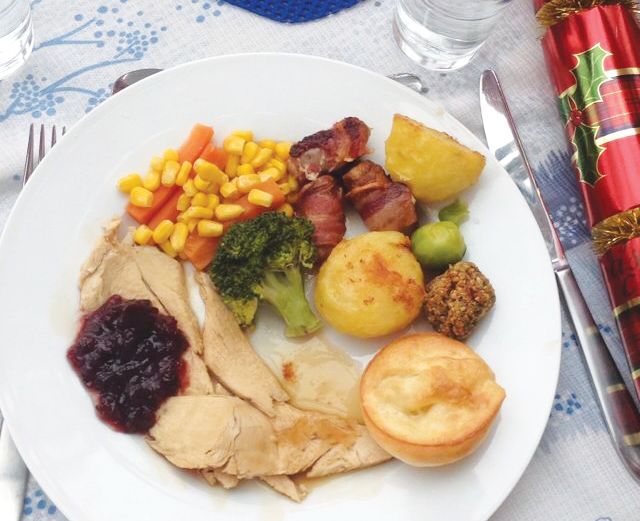
LAUREN BARTLETT
Features Editor
Every year around this time, the weather gets colder, the trees become bare and Americans look forward to the traditions they have always known. All things holiday are in full swing.
Americans are familiar with the Christmas tradition of celebrating the birth of Jesus Christ and anticipating the arrival of Santa Clause for Christmas.
Americans also celebrate lighting the Menorah and spinning the dreidel for Hanukkah, honoring the seven principals of Kwanzaa and fasting in the time of Ramadan.
Most Americans are familiar with these traditions, but what most don’t know are how these holidays are celebrated all over the world.
According to worldholidaytraditions.com, the country of Spain celebrates Christmas along with Hogueras, meaning “bonfires.” This tradition is the celebration of the winter solstice, where people jump over fires to symbolize anti-sickness.
However, their Christmas dinner is not eaten until after midnight. It includes traditional dishes such as Pavo Trufado de Navidad, a dish that includes turkey with mushrooms.
While some families believe Santa brings gifts, others believe that the Three Wise Men bring them.
For some, Christmas in Spain continues after Dec. 25 when on the Eve of Epiphany, Jan. 5, children place their shoes at their doorstep in the middle of the night, so when the Three Wise Men pass by, they will leave gifts.
In England, Christmas is the most popular holiday. On Christmas Eve, children put their boots at the foot of their bed and wait for Father Christmas to bring gifts.
Christmas Day is spent having a traditional Christmas dinner followed by a dessert pudding topped with brandy sauce.
Another holiday tradition in England is the day after Christmas, called Boxing Day. This day is spent giving gifts to those of service.
They believed if two enemies got under the mistletoe and kissed, they disregarded all weapons and decaled a truce. England was the first country to use Mistletoe.
In Sweden, the most celebrated holiday is Christmas. Swedish spend the weeks prior to Christmas lighting a candle every Sunday, honoring Advent.
Additionally, the tradition of the Christmas tree is practiced in Sweden, but the tree is not brought in to the house until two days before Christmas.
The tree is decorated with wrapped candy, lights and straw trinkets.
Christmas Eve is the highlight of the holidays. Those celebrating spend the evening preparing for the Christmas meal, called Smorgasbord.
This meal includes ham, jellied pigs feet and rice porridge. After the meal, the “Tomte” comes. He is the Christmas elf who lives under floorboards of the house or barn and looks after the family and livestock throughout the year. “Tomte” often brings presents to children during the night.
Monika Schulte is the Assistant Professor of German and International Office Coordinator at Piedmont College, and she lived in Germany most of her life. According to Schulte, Christmas is a common holiday celebrated during the holidays in Germany.
They also celebrate Advent three weeks before Christmas.
“Some American Christmas words come from the German language. Kris Kringle is a corruption of Christkindl. Christkindl is who brings gifts on Christmas Eve in Germany, not Santa,” Schulte said.
Germany is well known for its Christmas markets where all sorts of Christmas foods and decorations are sold.
Their most popular decorations are glass ornaments. In Germany, unlike America, the Christmas tree is traditionally brought into the house on Christmas Eve.
In some parts of Germany, during the evening, families read the Bible and sing Christmas songs such as O Tannenbaum and Stille Nacht (Silent Night).
“Christmas Eve is the main day when Germans exchange presents with their families,” Schulte said. “[My family and I] still do that here. It’s simply much more romantic and gives a different feel of intimacy if you are sitting together at night with the Christmas tree lit and exchange gifts.”
What are your holiday traditions? Go to piedmontroar.com, and tell us.








